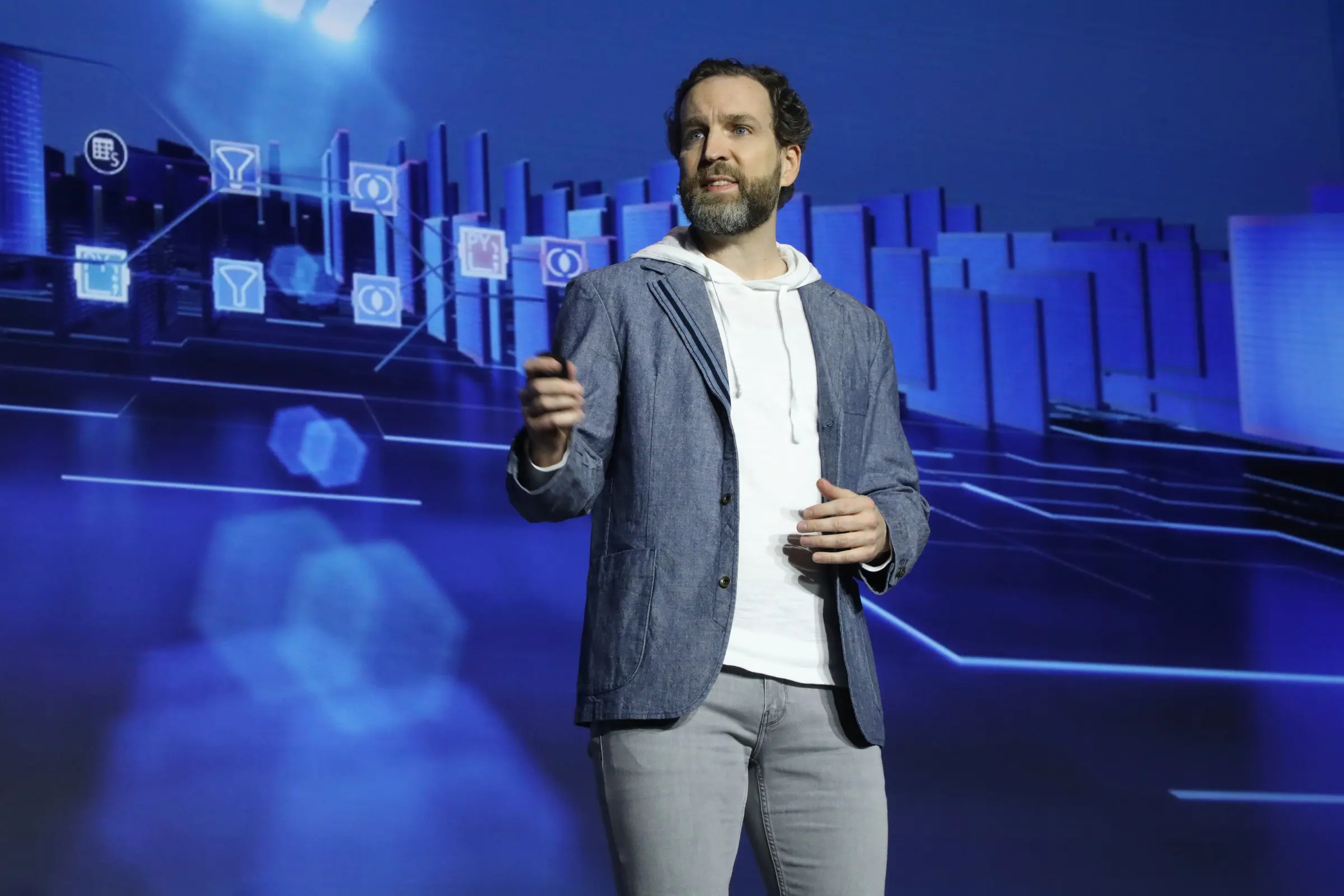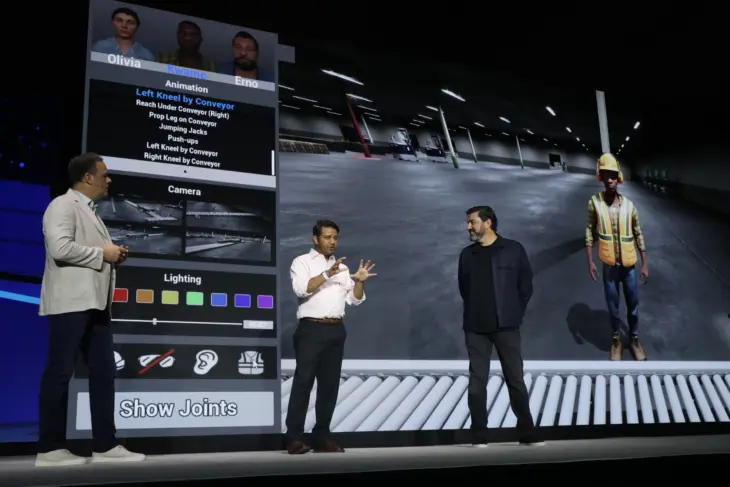Quantum computing seems poised to finally take center stage. SAS wastes no time and ushers in the era of ‘quantum AI’ during Innovate.
Bryan Harris, CTO of SAS, takes the audience on a history lesson. SAS has been around for nearly fifty years and has witnessed the most profound technological changes up close. “Today, it’s all about GenAI. People think that sprinkling a bit of GenAI magically makes all your problems disappear. That’s not how it works: AI has limitations, and applying it without control carries risks. AI requires robust orchestration”.
With that last sentence, Harris summarizes SAS’s philosophy. At every edition of Innovate, the company highlights the importance of reliable technology. This year, SAS prepares itself and its customers for the next wave: ‘quantum AI’. “Quantum computing is no longer the future. It’s really happening now”.
read also
SAS Focuses on AI Agents, But Does It in Its Own Way
Do-It-Yourself or Ready-Made
Quantum is a new domain for SAS, but in AI, it can look back on a long tradition. SAS can, without exaggeration, call itself a pioneer in analytics. During Innovate, it shows that it’s keeping up with the agentic AI train, like any self-respecting technology company. “Sometimes an evolution comes along where you have to start all over again. This is not the case for us. Agentic AI is nothing more than a continuity of what we’ve been doing for years,” says Jared Peterson, VP Platform Engineering.
SAS offers AI in all its forms in various ways. Central to the portfolio is Viya. Peterson: “Frustration is often a good breeding ground for innovation. Many innovative ideas come from frustration over a problem you can’t solve. Companies invest a lot of money in AI but struggle to get value from it. At SAS, we know how the AI cycle works. With Viya, we want to give companies the tools to be innovative and productive, following a proven path and with respect for data”.

Viya Workbench is the platform for do-it-yourselfers, but SAS also has a solution for those who are all thumbs. Last year, SAS announced Models: ready-made AI models that companies can run in their environment. Udo Sglavo, VP Applied AI & Modeling, unveils the catalog this year. “We could build an infinite number of models, but market demand determines which models get priority. The models solve actual problems”.
“SAS is a platform, and if customers want to build themselves, that’s fine with us. Over the years, we’ve gained a lot of experience, which we now bundle into a ready-to-use component. The models are packaged in a container that customers can run wherever they want, whether they’re our customers or a competitor’s. Companies are thus freed from model issues and build trust in the models by using them,” Slavo explains.
(Re)new(ed) Enthusiasm
All those decades of AI experience bring SAS to the next big step. With quantum AI, SAS wants to explore a new frontier, almost literally. Quantum computing has been talked about for decades, but it has yet to prove its value in the ‘real’ world. The term quantum AI also dates back to the early 2000s, when the first Quantum AI Lab was established by NASA and Google. At SAS, they are convinced that this will change soon.
On the sidelines of Innovate, SAS shares findings from a global survey of business leaders, which shows that three out of five companies are engaged in research on quantum technology. “We certainly see an appetite for quantum,” explains Gavin Day (COO). “Customers are trying to understand how quantum works. It’s gradually becoming less theoretical”.
Day tempers the enthusiasm though. “Adoption will still take a few years. First, costs need to come down. Only when we can scale the technology to make it accessible to small and medium-sized businesses will we be able to talk about a boom. But we believe adoption will rise quickly as the technology matures. That’s why, as a vendor, we want to be ahead of the boom“.
AI has long had to search for a use case. We must avoid this happening with quantum now.
Gavin Day, COO SAS
Amy Stout, Principal Product Manager Quantum Computing, also speaks with caution. “By combining data with the computational power of quantum computers, complex problems can be solved faster, serving humanity. But with quantum AI, we are not yet in the production phase. Quantum computers are commercially available today, but we will likely only see real advantages over traditional computers in a few years. This process will proceed step by step.”
The current ‘revival’ of quantum computing reminds Day of what recently happened with AI. “AI is a technology that has long had to search for a good use case. We must avoid this happening with quantum now.”
Hybrid approach
That quantum is high on the technology agenda today is largely thanks to SAS partners like D-Wave and IBM. Microsoft rolls out the red carpet with the quantum chip Majorana-1. Satya Nadella briefly calls in during SAS Innovate to stir up enthusiasm for quantum computing, to the extent that it was still needed. “Every breakthrough in error correction is exciting because this is the biggest limitation for quantum computing. We still have too much noise,” says Stout.
SAS believes in a hybrid approach, where the quantum accelerator is not fully pressed. Workloads are entrusted to CPUs, GPUs, or quantum processing units (QPU), depending on the computational power needed at any given time. “Quantum computers accelerate the decision-making process but do not necessarily always provide the most optimal outcome. Combining both worlds ensures a balance between quality, applicability, and speed,” says Harris.
Even when quantum computers become more stable, a hybrid approach will continue to be preferred, thinks Stout. “You simply don’t need a quantum computer for everything; that would be far too expensive. For example, you will never run Word and Excel on a quantum chip. This is not only our vision but is widely supported by the academic world.”
In the quantum era, SAS will not abandon its principles. Stout: “Ethics remain a primary focus for us. There are concerns that quantum computers will crack traditional encryption, but this has largely been resolved with quantum standards. Governance for quantum AI will start from the same basic principles we already apply today.”
You will never use a quantum computer for Word and Excel.
Amy Stout, Principal Product Manager Quantum Computing
Attacking football
The temperature noticeably rises as SAS Innovate progresses, and this is not only due to the tropical climate in Orlando. Quantum fever is reaching a peak. Stout: “We want to make quantum AI quickly accessible and intuitive for customers and guide them through the journey. For most companies, quantum computers will be available through the cloud.”
“Research is one of the strategic pillars here. We are looking at how quantum computers can help AI, but also how AI can help quantum computers, for example, for code generation. However, this is still early days. Next year, we hope to be able to tell much more about this,” concludes Stout with a cliffhanger.

“How to make quantum more transparent and democratize is an exciting evolution for us. The implementation of algorithms will be completely different. But to put it in sports terms: we no longer need to defend. We can now play attacking football,” concludes Peterson.
